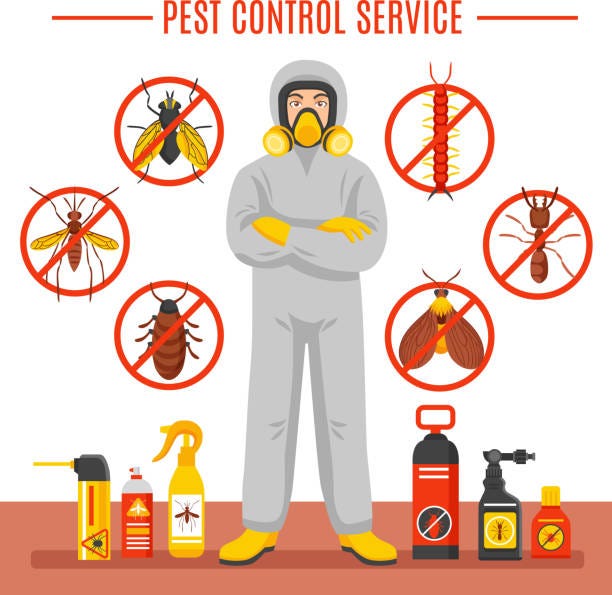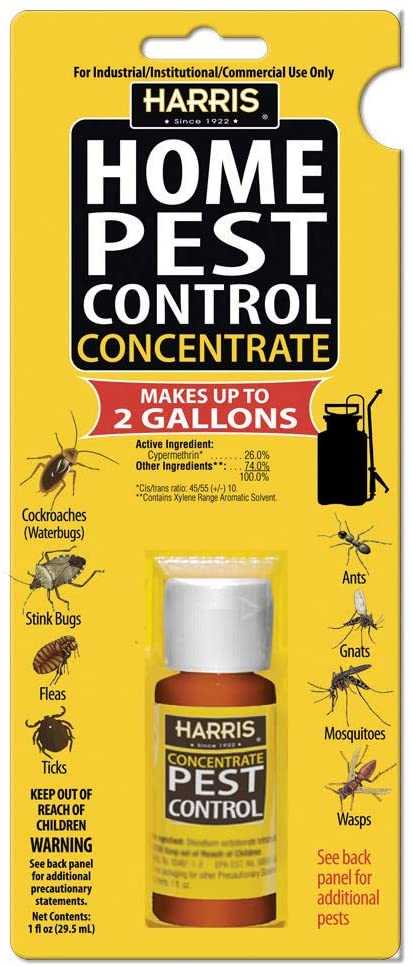Trusted A1 Bed Bug Exterminator Charlotte - Get Rid of Bed Bugs Quick
Trusted A1 Bed Bug Exterminator Charlotte - Get Rid of Bed Bugs Quick
Blog Article
Bed Pest Treatment Breakdown: Comparing Chemical Vs. Non-Chemical Solutions
In the realm of bug control, specifically when handling the relentless problem of bed bugs, the option in between chemical and non-chemical therapy services can be an essential one. Both strategies offer distinctive advantages and disadvantages, influencing elements such as performance, safety considerations, and total cost. By taking a look at the nuanced details of each technique, a clearer understanding of which path to seek in attending to a bed bug invasion can be achieved.
Performance of Chemical Therapies
Chemical therapies for bed bug problems have actually been extensively identified for their fast and potent effectiveness in getting rid of these bugs. When considering the effectiveness of chemical therapies, it is important to comprehend that they can provide a quick and complete remedy to a bed bug issue.
Additionally, chemical treatments have the advantage of offering recurring effects, suggesting that they can remain to eliminate bed insects also after the first application. This recurring activity is particularly useful in combating any type of prospective re-infestations. Furthermore, the fast action of chemical therapies can bring alleviation to individuals facing severe bed pest infestations, allowing them to restore control of their living rooms promptly.
Safety And Security Worry About Chemical Solutions
One essential element that needs careful consideration when making use of chemical solutions for bed pest therapy is making sure the security of owners and the environment. Exposure to specific chemicals made use of in bed bug therapies can lead to respiratory system problems, skin irritability, or other unfavorable reactions, specifically in people with pre-existing problems or level of sensitivities.
Furthermore, the environmental impact of chemical options is an additional substantial factor to consider. Some pesticides utilized in bed bug therapies might be unsafe to helpful pests, wildlife, and ecosystems if they seep right into the dirt or water systems. It is necessary to make use of chemical therapies sensibly, complying with safety standards, and considering less harmful choices to alleviate these dangers and make sure the effective and risk-free monitoring of bed insect invasions.
Advantages of Non-Chemical Methods
Thinking about the prospective security issues and environmental effect associated with chemical remedies for bed insect treatment, checking out non-chemical techniques offers a promising choice with numerous distinct benefits. Non-chemical treatments are ecologically pleasant, as they do not contribute to air or water pollution, making them a lasting selection for bug control.
In addition, non-chemical solutions can be efficient in targeting bed pests, consisting of hard-to-reach areas where chemical therapies may not penetrate. Approaches such click now as warmth therapy, vacuuming, heavy steam cleaning, and mattress coverings supply complete removal without the usage of hazardous chemicals. Furthermore, non-chemical techniques can be much less disruptive, calling for very little prep work and enabling quicker reentry right into treated locations. Generally, selecting non-chemical bed insect treatment techniques not just focuses on security and environmental management but additionally ensures reliable and extensive pest control.
Limitations of Non-Chemical Treatments

Additionally, non-chemical therapies typically call for multiple applications to accomplish successful obliteration. This can be lengthy and might not constantly ensure complete elimination of all bed pests and their eggs, particularly in hard-to-reach or surprise locations.
Moreover, the success of non-chemical therapies greatly counts on proper application and thoroughness, which can be testing for people without professional knowledge. Insufficient application of non-chemical methods might lead to insufficient removal, bring about relentless problems and browse around this web-site the demand for additional therapies.
As a result, while non-chemical treatments have their benefits, it is vital to recognize these restrictions and consider them when identifying one of the most reliable strategy for handling bed insect problems.
Price Comparison: Chemical Vs. Non-Chemical Options
Provided the constraints linked with non-chemical therapies, a vital aspect to examine in the context of bed pest monitoring is the cost contrast between chemical and non-chemical alternatives. In comparison, non-chemical therapies like warm treatment or vapor can be extra expensive, with prices ranging from $1,000 to $6,000 for a whole home. While the first price of chemical treatments may seem reduced, several therapies may be called for to fully get rid of the invasion, possibly increasing the overall expense.
Verdict

Considering the prospective security concerns and environmental influence associated with chemical services for bed pest treatment, checking out non-chemical strategies presents an encouraging choice with a number of unique advantages.Given the restrictions linked with non-chemical treatments, an important facet to assess in the context of bed pest administration is the price comparison between chemical and non-chemical choices. In comparison, non-chemical treatments like warm treatment or steam can be more expensive, with expenses ranging from $1,000 to $6,000 for an entire home. While the preliminary expense of chemical treatments may seem lower, several treatments might be required to fully remove the infestation, potentially raising the general cost.In final thought, when comparing chemical and non-chemical bed bug treatment alternatives, it is essential to consider performance, security, benefits, constraints, and expense.
Report this page